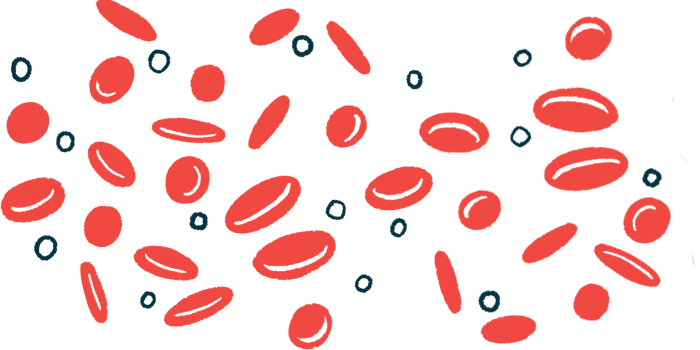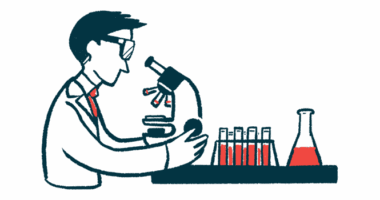Case Study: Secondary CAD Caused by Rare Cancer in Spleen

A case of secondary cold agglutinin disease (CAD) was triggered by a rare, undetected slow-growing type of immune cell cancer in the spleen.
The case study, “Cold agglutinin syndrome secondary to splenic marginal zone lymphoma: a case report,” was published in the journal Hematology, Transfusion and Cell Therapy.
In CAD, antibodies known as cold agglutinins bind red blood cells in cold temperatures, which activates the immune system to target and destroy these cells (a process called hemolysis). As a result, tissues in the body do not receive enough oxygen, which can lead to fatigue and pain.
Causes of the primary form of the disease are unknown, but recent studies suggest genetic factors may play a role. Primary CAD is a chronic condition that requires constant care and treatment.
Secondary CAD is triggered by an underlying disease such as an infection, another autoimmune disorder, or cancers of antibody-producing B-cells, including lymphoma or leukemia.
In this report, clinicians at the Hospital de Clínicas de Porto Alegre in Brazil described the case of a 61-year-old man who developed secondary CAD associated with splenic marginal zona lymphoma — a rare, slow-growing type of B-cell non-Hodgkin lymphoma that develops in the spleen.
“Here, we aim to describe the case of a [CAD] caused by marginal splenic lymphoma, with remarkable high titers [levels] of cold agglutinins, as opposed to only mild clinical manifestations,” the team wrote.
The man was referred to a hematologist after discovering he had an enlarged spleen following a pre-surgical examination before a hernia operation. He had lost 8 kilograms (about 18 lbs) over the past three months, although he was following a diet. He did not experience symptoms such as abdominal pain and did not have enlarged lymph nodes.
His bloodstream level of hemoglobin — the protein in red blood cells that carries oxygen — was just below the normal range (9.8 grams per deciliter). However, his red blood cell count was low due to blood cell clumping, a sign of CAD.
The counts of white blood cells — leukocytes and lymphocytes — were markedly high, with signs of abnormal lymphocytes and cellular debris on blood film analysis. He also had high levels of monocytes, a type of leukocyte that can transform into immune macrophages and dendritic cells that fight infection.
Although his platelets were clumped (aggregated), they appeared structurally normal under the microscope. Liver and kidney blood tests were normal, and screens for infections such as hepatitis B and C, as well as HIV, were negative. Elevated lactate dehydrogenase and immature red blood cells (reticulocytes) counts indicated anemia.
Tests for CAD-related antibodies and immune proteins were strongly positive. Cold agglutinin screening was also performed, with positive results. Blood samples containing antibodies reacted with all adult red blood cells at room temperature, and this reaction was even greater at lower temperatures. Umbilical red blood cells did not react at both temperatures.
Following the diagnosis of CAD, the patient remembered he previously had symptoms of Raynaud’s syndrome, a common CAD symptom in which blood vessels in the fingers and toes constrict when exposed to cold temperatures and turn pale, red, or blue.
Due to his enlarged spleen, clinical examinations continued with a bone marrow aspiration (removal of a small liquid sample), which revealed excessive cell levels but low levels of normal lymphocytes.
Bone marrow biopsy and microscopic analysis showed cells with markers consistent with marginal zone lymphoma. A PET scan at the time showed an overall increase in the volume of the spleen and increased metabolic activity.
He was then treated with six cycles of the first-line CAD treatment rituximab, plus the immunosuppressant cyclophosphamide, the cancer treatment vincristine, and the anti-inflammatory prednisone.
After treatment, a new PET scan revealed a partial reduction in spleen volume and a normalization of metabolic activity. At this point, the patient had no symptoms and his anemia was resolved. Clinicians then discontinued the treatment, and he began clinical follow-up.
“The remarkable peculiarity, in this case, was the abyss between laboratory and clinical findings,” the researchers wrote.
“Besides its rarity and anecdotal clinical and laboratory findings, this case emphasizes the importance of the mutual exchange between the clinical and the immunohematology laboratory teams, providing a correct, fast and efficient diagnosis to support the patient’s need,” they added.







